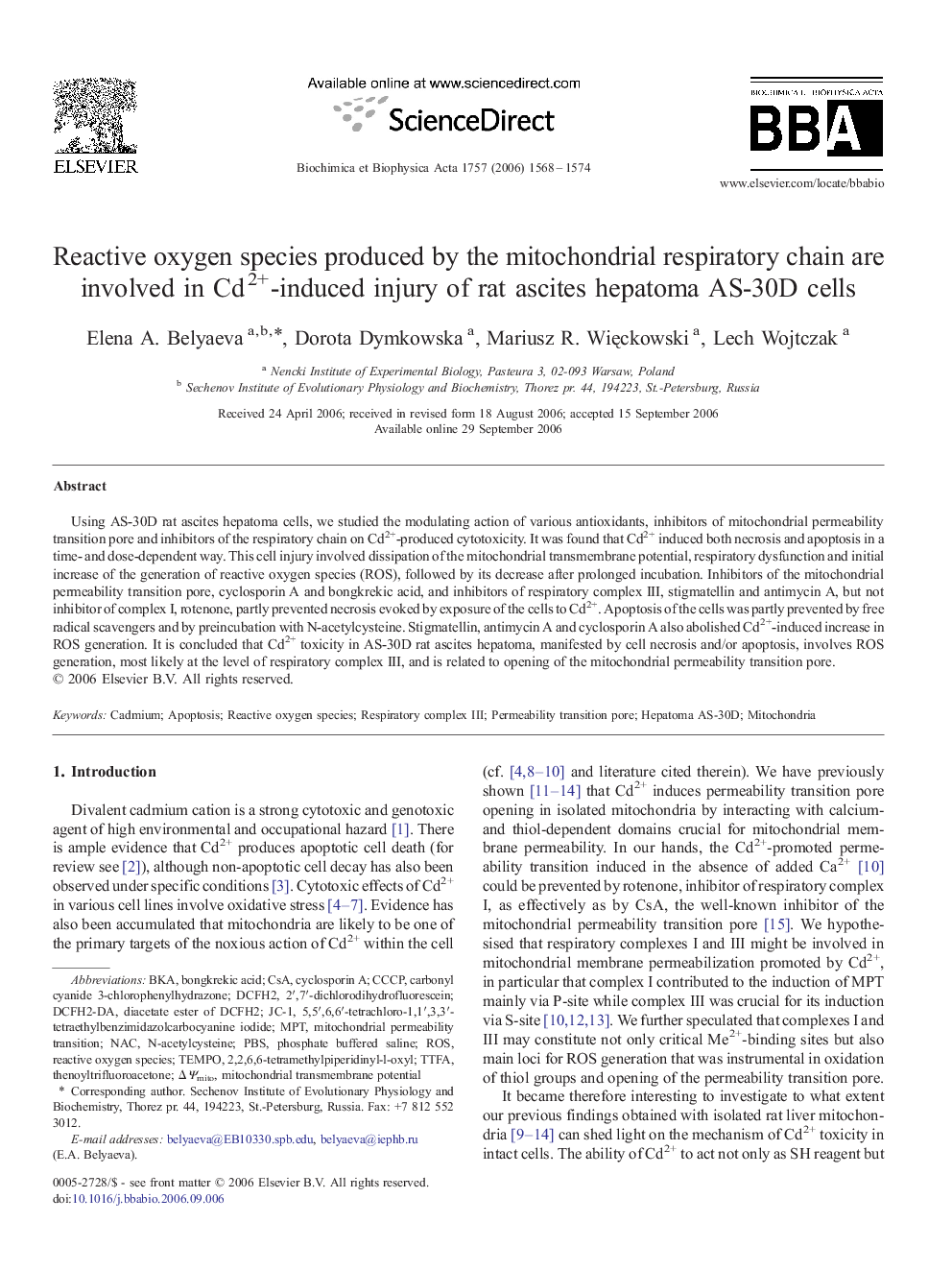| Article ID | Journal | Published Year | Pages | File Type |
|---|---|---|---|---|
| 1943606 | Biochimica et Biophysica Acta (BBA) - Bioenergetics | 2006 | 7 Pages |
Using AS-30D rat ascites hepatoma cells, we studied the modulating action of various antioxidants, inhibitors of mitochondrial permeability transition pore and inhibitors of the respiratory chain on Cd2+-produced cytotoxicity. It was found that Cd2+ induced both necrosis and apoptosis in a time- and dose-dependent way. This cell injury involved dissipation of the mitochondrial transmembrane potential, respiratory dysfunction and initial increase of the generation of reactive oxygen species (ROS), followed by its decrease after prolonged incubation. Inhibitors of the mitochondrial permeability transition pore, cyclosporin A and bongkrekic acid, and inhibitors of respiratory complex III, stigmatellin and antimycin A, but not inhibitor of complex I, rotenone, partly prevented necrosis evoked by exposure of the cells to Cd2+. Apoptosis of the cells was partly prevented by free radical scavengers and by preincubation with N-acetylcysteine. Stigmatellin, antimycin A and cyclosporin A also abolished Cd2+-induced increase in ROS generation. It is concluded that Cd2+ toxicity in AS-30D rat ascites hepatoma, manifested by cell necrosis and/or apoptosis, involves ROS generation, most likely at the level of respiratory complex III, and is related to opening of the mitochondrial permeability transition pore.
